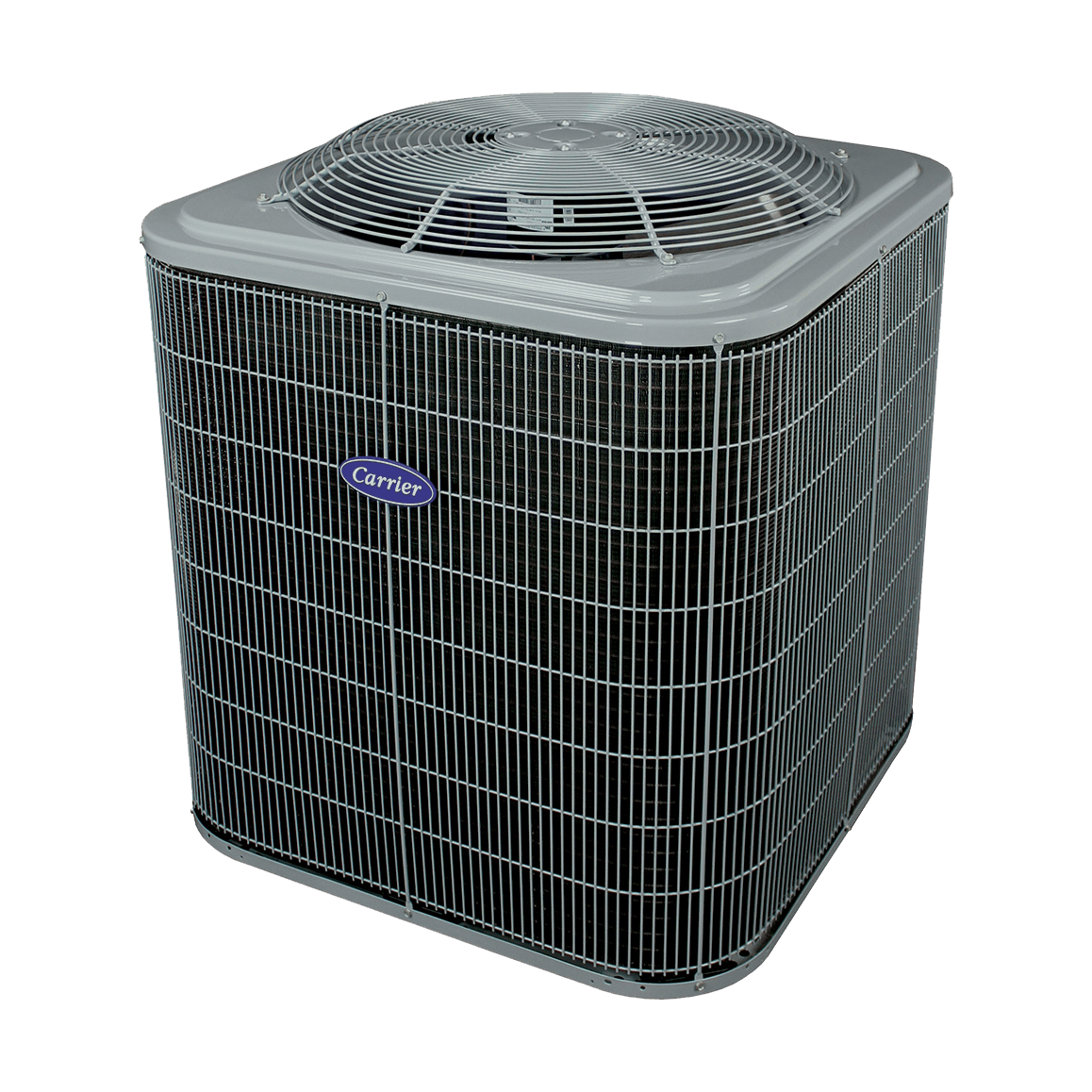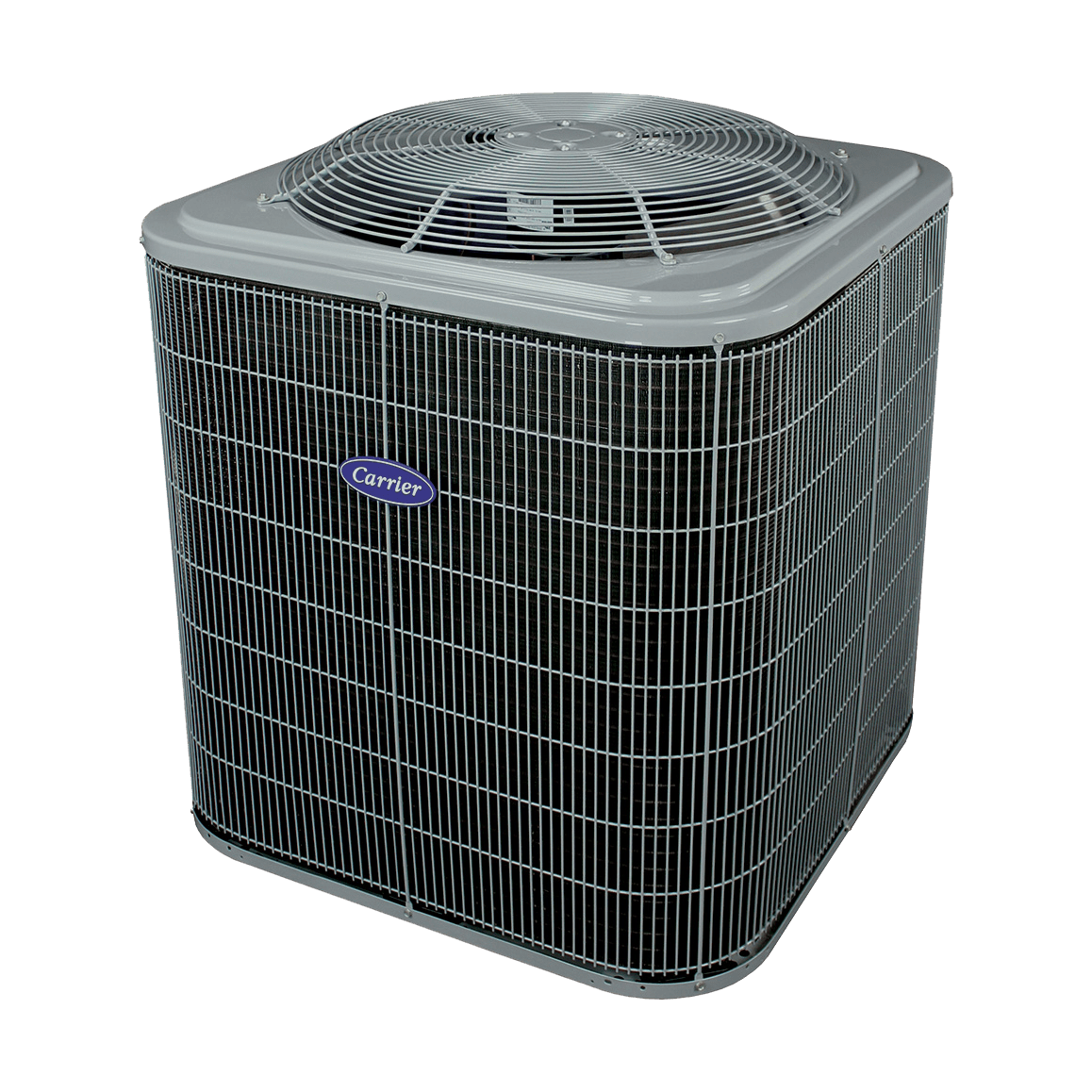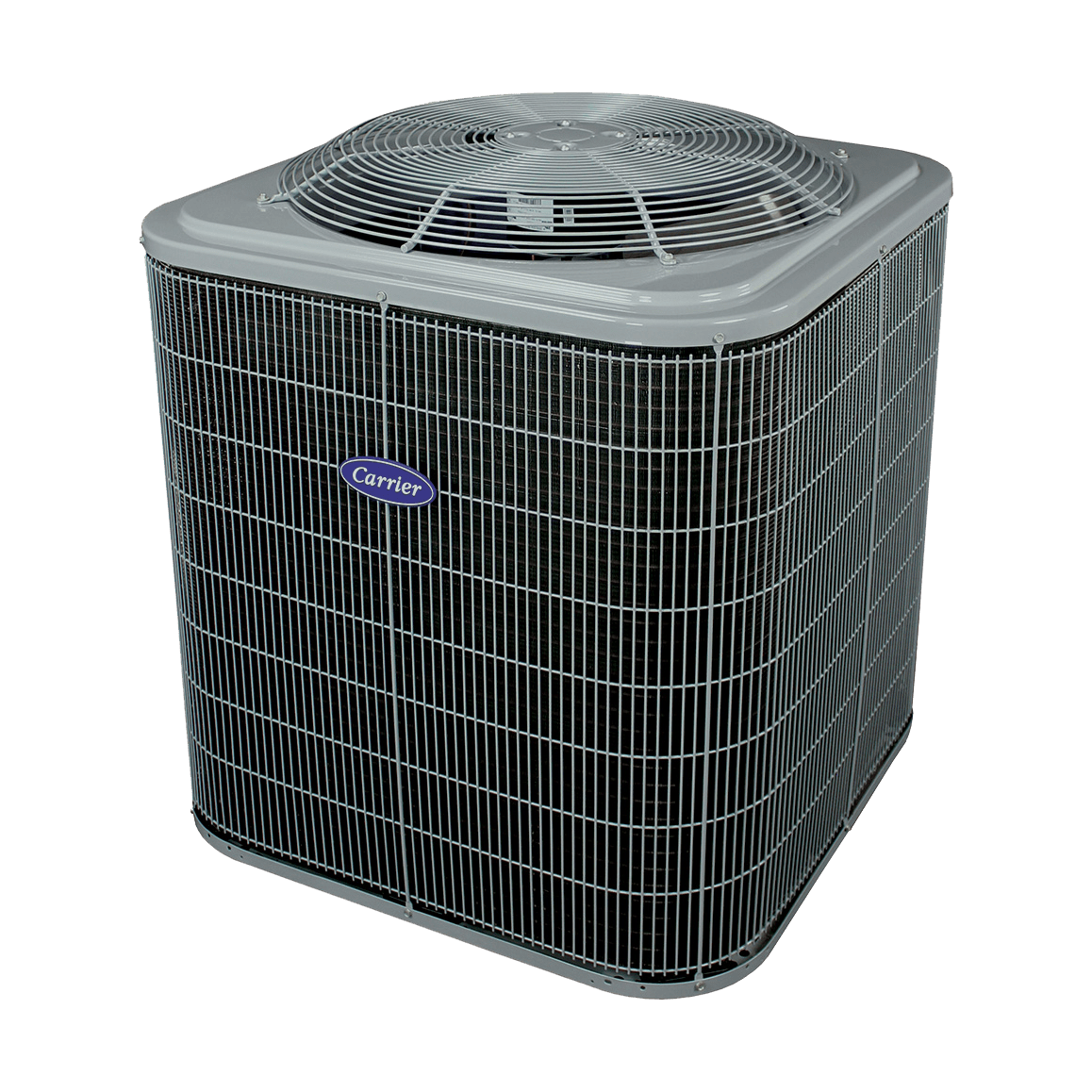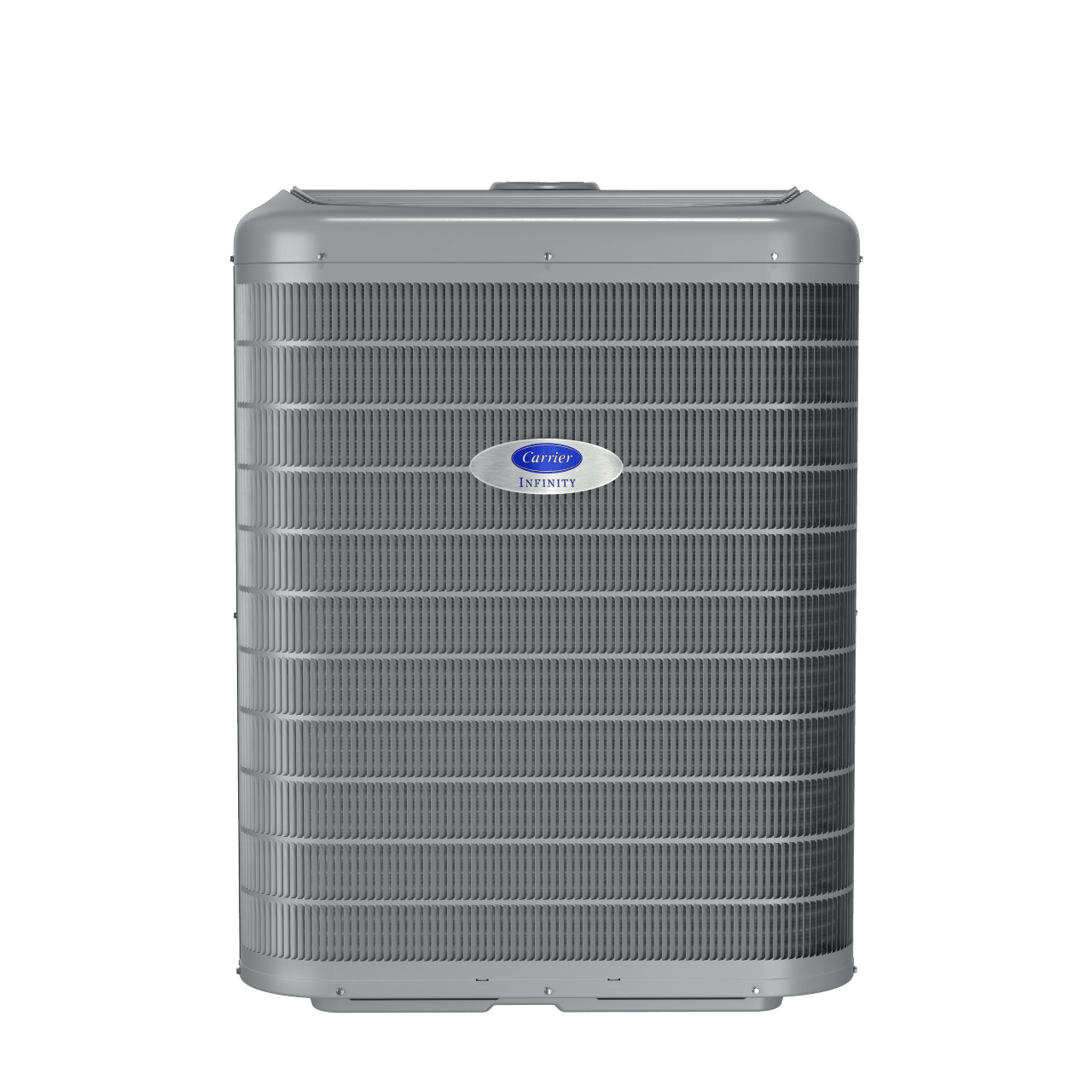Air Conditioner Systems
When selecting a new air conditioner for your home, you have an array of choices. We have the information you need to research your options, whatever your budget or your needs—from a single air conditioner to an entire Carrier system. Our lineup of central air conditioners allows you to choose the best solution to meet your needs. After all, we’ve been focused on cooling indoor spaces since our founder, Willis Carrier, invented the first modern air conditioner system in 1902. From air conditioners to furnaces, heat pumps and more, Carrier has all of the products for your home comfort.

Compare A/C Product Lines
|
|||||||
|
|||||||
|
|||||||
|
|||||||
|
|||||||
|
|||||||
|
|||||||
|
|||||||
|
|||||||
|
|||||||
|
|||||||
|
|||||||
|
|||||||
Up to 21 SEER2 for premium energy savings with premium comfort features
Initial Cost $$$
Energy Savings:
Comfort Features:
Sound Performance:

Initial Cost $$
Energy Savings:
Comfort Features:
Sound Performance:

Initial Cost $$
Energy Savings:
Comfort Features:
Sound Performance:

Up to 16.5 SEER2 for enhanced energy savings with standard comfort features.
Initial Cost $$
Energy Savings:
Comfort Features:
Sound Performance:

Up to 16.5 SEER2 for enhanced energy savings with standard comfort features.
Initial Cost $
Energy Savings:
Comfort Features:
Sound Performance:

Up to 16.5 SEER2 for enhanced energy savings with standard comfort features.
Initial Cost $
Energy Savings:
Comfort Features:
Sound Performance:

Initial Cost $
Energy Savings:
Comfort Features:
Sound Performance:
WHAT TO LOOK FOR WHEN CHOOSING AIR CONDITIONING SYSTEMS
Comfort
Features
Different central air conditioner products affect your comfort and the consistency of indoor cool air. A single-stage air conditioner is the most basic model, with airflow on or off. A two-stage model offers high- and low-stage cooling as conditions require and therefore can provide enhanced comfort levels. Variable-speed AC systems include premium comfort features such as multiple stages for more precise temperature control and more consistent comfort.
Humidity
Control
Reducing the humidity levels within your home can dramatically improve your comfort and indoor air quality. To help cool your home, your AC unit pulls heat and humidity out of indoor air, using your system’s blower to circulate the air. Models with a variable-speed compressor provide excellent humidity control because they can operate at lower speeds for longer times. So, they spend more time pulling humidity out of the air than models with a two-stage or single-stage compressor.
Sound
Performance
Air conditioning units with variable and multi-stage compressors provide ultra-quiet operation compared to models with single-stage compressors. In addition, models that include sound blankets and our Silencer System II™ design can further reduce noise levels. If your AC unit is located near a bedroom window or patio, for example, sound performance might be an important feature to consider.
Energy
Savings
Air conditioning units are rated by their seasonal energy efficiency ratio (SEER2). The SEER2 rating of an air conditioner is much like miles per gallon (MPG) for a car: The higher the SEER2 rating, the more energy efficient the system.
Learn more about flexible payments and lease options.
Learn more about our Infinity System to personalize your home's indoor climate.
What is Central Air Conditioning and How Does It Work?

WIDE SELECTION OF CARRIER CENTRAL AIR CONDITIONERS
Carrier offers a variety of central AC units to fit any budget and to keep your home comfortable. Learn about Carrier air conditioner prices and ways to save. Your local Carrier expert can help you select the best AC replacement to fit your needs and provide proper HVAC installation services. No ducts? No problem. We also offer ductless mini split systems.
Powerful Central Air Conditioner Technology
Select a central air conditioner equipped with technology that offers precise temperature balance and powerful performance. From the company that invented modern air conditioning, Carrier split systems have patented features that can maximize your home comfort.
Incredibly Quiet AC Units
Carrier offers incredibly quiet air conditioning units that won’t disrupt you in your backyard or on your patio. For ultra-quiet comfort, consider our Infinity 26 AC unit with Greenspeed® technology.
ENERGY EFFICIENT HEATING AND AIR CONDITIONING UNITS
Carrier offers a variety of energy-efficient air conditioners for your home. Your local Carrier HVAC system expert can help you choose a new AC unit with impressive SEER ratings that might qualify for local utility rebates.
SEER2 AND EER2 RATINGS
We have introduced all new air conditioners that are compliant with the 2023 Department of Energy minimum efficiency requirements as part of our ongoing commitment to creating energy-efficient HVAC systems. These new air conditioners have also been reviewed and tested under the new 2023 testing procedures and have SEER2 and EER2 ratings published.
Effective January 1, 2023, the Department of Energy (DOE) is requiring new testing procedures to determine efficiency ratings on split system air conditioners. The Seasonal Energy Efficiency Ratio (SEER and SEER2) and Energy Efficiency Ratio (EER and EER2) are two efficiency standards set by the DOE for HVAC systems. These ratios are calculated by using rigorous testing procedures that are determined by the DOE. The Department Of Energy updated these new air conditioner efficiency standards to SEER2 and EER2, on January 1, 2023, to account for more accurate testing conditions that better represent actual operating conditions and are required for any equipment manufactured and installed on or after January 1, 2023.
Frequently Asked Questions About Air Conditioners
Air conditioning is a process that involves the removal of heat and humidity from indoor air to provide a cooler and more comfortable environment. Learn more about how does air conditioning work.

LEARN MORE ABOUT AC UNITS
- Find a Carrier Air Conditioner Expert in your area
- Air Conditioner Maintenance Tips
- Air conditioner price; How much does it cost?
- Help with Air Conditioner Service
- Find Out How Do Air Conditioners Work
- Understand the importance of SEER2 rating in an AC unit
- Learn about AC sizes: 2 ton AC unit, 2.5 ton AC unit, 3 ton AC unit, 4 ton AC unit, 5 ton AC unit
- Learn about air conditioning repair
- Wondering "What Size Air Conditioner Do I Need?"
- Troubleshoot an Air Conditioner tips
- Learn about Air Conditioner Coil Cleaning
- Tips to Unclog Air Conditioner Drain Line
- Factors and variables - "How Long Do Air Conditioners Last?"
- Learn about Air Conditioner Filters
- How Often to Change AC Filter
- Learn How to Change Air Conditioner Filters
- Why is my AC Fan Not Working?
- Is your Air Conditioner Not Cooling?
- Why you should get an AC Tune Up
- Learn about frozen AC coils
- Have hot or cold spots in your home? Consider installing a ductless mini split
- What are the best air purifiers for allergies?
- What are the benefits of air purifiers?
- Do air purifiers work?
- What is a split air conditioning system?
- Is air conditioning bad for the environment?
- Learn about air conditioning unit compressors
- What is a heat pump?
- Browse heating and cooling products
- Learn about air conditioning installation
- Learn about wall mounted air conditioners, also known as ductless mini splits
- What temperature should I set my thermostat
- Learn what to do if you have mold in AC unit, AC leaking water, an AC unit not turning on
- Discover the benefits of UV lights for air conditioners
- In need of air conditioner parts or equipment?
- Learn about different HVAC system types
- Explore the value of inverter air conditioners
- Learn about HVAC financing and the benefits of HVAC financing
- Learn about AC refrigerant: R-22 refrigerant, R-454B refrigerant


